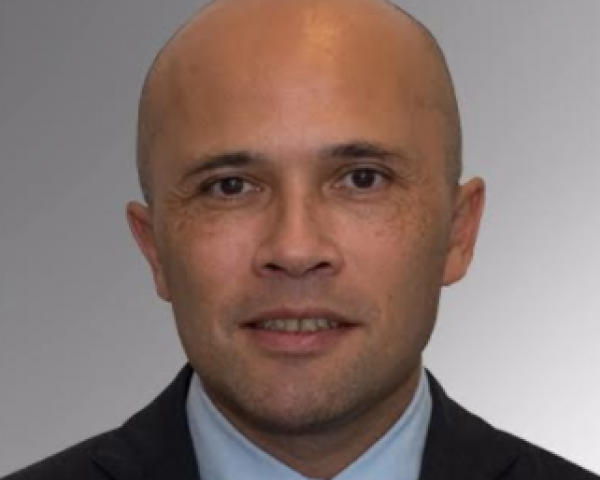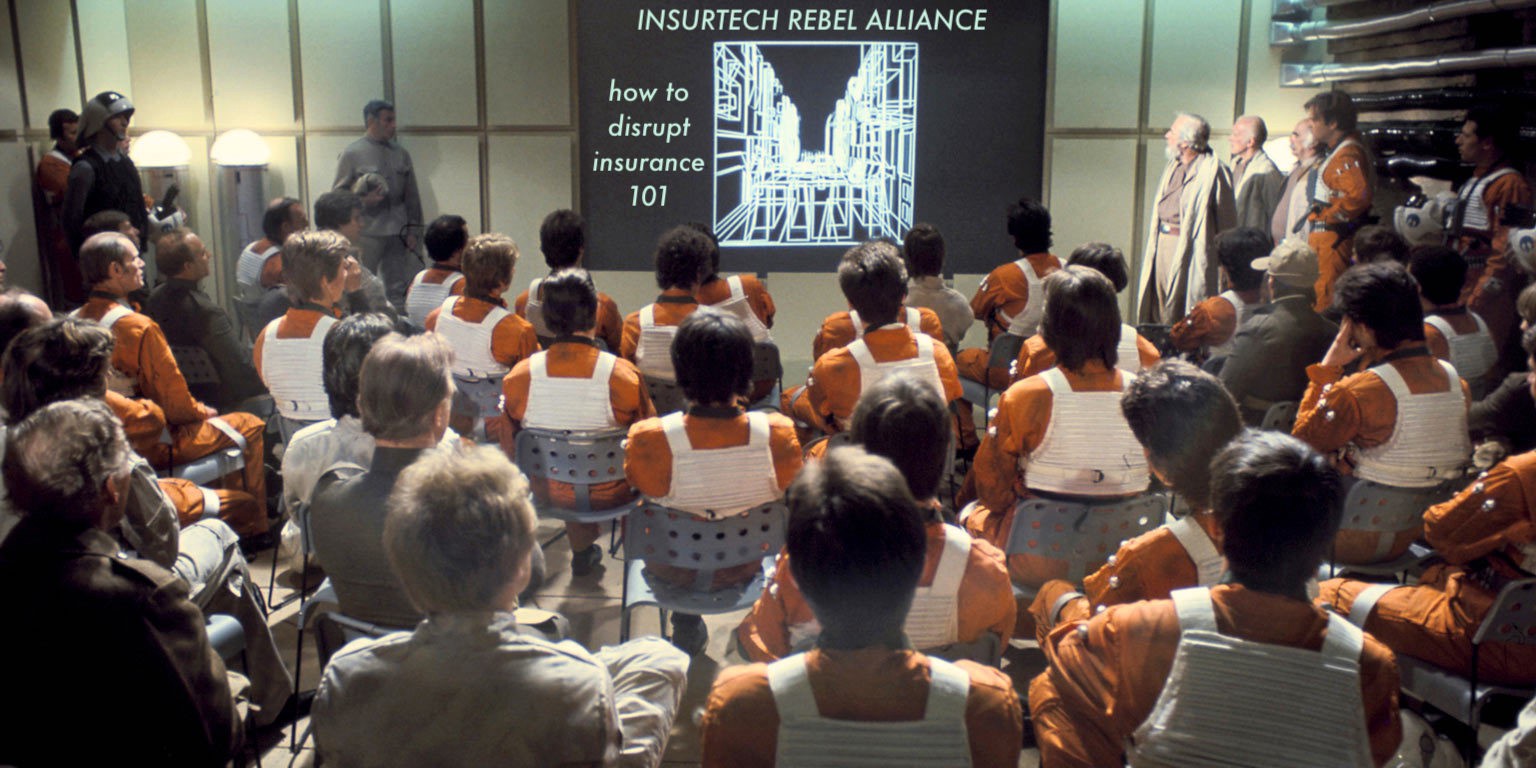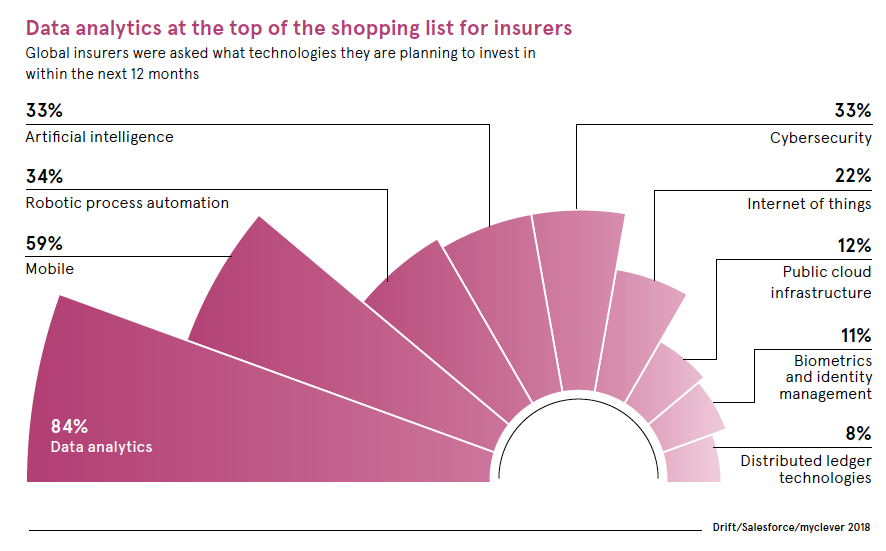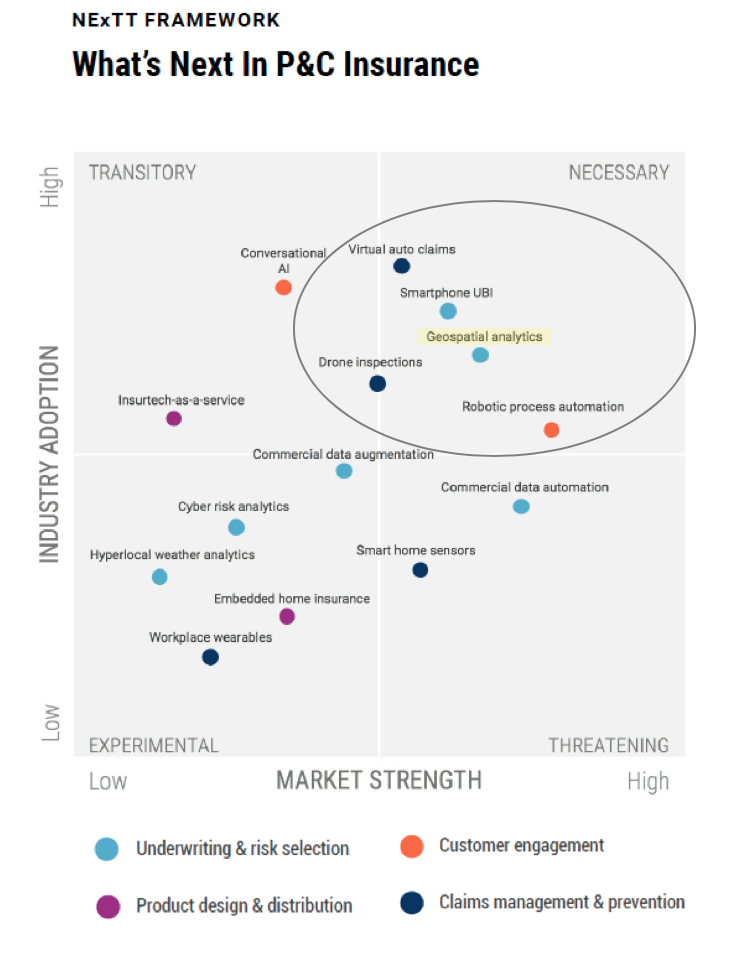Focusing Innovation on Real Impact
The story of, and lessons from, the first fully digital life insurance company (founded way back in 2006).

The story of, and lessons from, the first fully digital life insurance company (founded way back in 2006).

Get Involved
Our authors are what set Insurance Thought Leadership apart.
|
Partner with us
We’d love to talk to you about how we can improve your marketing ROI.
|

Roger Peverelli is an author, speaker and consultant in digital customer engagement strategies and innovation, and how to work with fintechs and insurtechs for that purpose. He is a partner at consultancy firm VODW.

Reggy de Feniks is an expert on digital customer engagement strategies and renowned consultant, speaker and author. Feniks co-wrote the worldwide bestseller “Reinventing Financial Services: What Consumers Expect From Future Banks and Insurers.”
Do you take the time to grow each team member, making the person better-prepared for tomorrow?

Get Involved
Our authors are what set Insurance Thought Leadership apart.
|
Partner with us
We’d love to talk to you about how we can improve your marketing ROI.
|

Mike Manes was branded by Jack Burke as a “Cajun Philosopher.” He self-defines as a storyteller – “a guy with some brain tissue and much more scar tissue.” His organizational and life mantra is Carpe Mañana.
80,000-pound tractor trailer rigs, which number over 2 million in the U.S., will disrupt the trucking industry as fleets convert to autonomous units.

Get Involved
Our authors are what set Insurance Thought Leadership apart.
|
Partner with us
We’d love to talk to you about how we can improve your marketing ROI.
|

As a renown workers’ compensation expert and industry thought leader for 40 years, Jeff Pettegrew seeks to promote and improve understanding of the advantages of the unique Texas alternative injury benefit plan through active engagement with industry and news media as well as social media.

At first blush, there wouldn't seem to be much in common between the unionized workers at GM who just walked out on strike and the gig workers at companies like Uber and Lyft that would have to be classified as employees, not contractors, and provided benefits under legislation that California approved last week. Yes, GM workers make cars, and Uber/Lyft drivers use cars, but how else are those stamping out auto bodies on an assembly line eight hours a day related to those who opt in and out of providing rides in their cars?
The answer is health insurance. The workers' issues take different routes to get to health insurance, but they both land there, with a thud.
Among Uber/Lyft drivers and other gig workers, many are just looking for any kind of health coverage—which accounts for the vast majority of the benefits that employers very much don't want to provide these workers. GM workers want wage gains that GM could easily afford if so much of compensation didn't get sucked up by health insurance. GM spends $9 an hour per worker on health insurance, a cost that logic suggests could be cut in half, given that the U.S. spends twice as much as other developed countries on healthcare while getting slightly below-average care. Turn those cost savings into wages, and workers could receive an extra $9,360 a year. That would be a raise of 14% to 26% for line workers, right off the top. Think the UAW would be happy with that?
The new California law, the GM strike and scads of other evidence suggest that our current healthcare system, including today's approach to health insurance, can't continue indefinitely, and, as Stein's Law says, "If something cannot go on forever, it will stop."
I have a broad prescription, if you will. (It has nothing to do with a political stance.) I even have a suggestion on how to get there from here. But, first, it's worth understanding how we stumbled into today's predicament, through more than a century of haphazard actions that are now defended zealously by lobbyists but that don't come close to resembling a plan.
Health insurance began as a charitable endeavor in the early 1900s, mostly so that workers who got injured or fell ill would have their wages covered while they sought care. Treatment didn’t cost much because there wasn’t much care to be offered. Treatment didn’t last long, either – generally, within a couple of weeks, the patient either recovered and returned to work or died. (Harsh, but true.) When Blue Cross was founded at Baylor University in 1929, it charged enrollees just $6 a year.
Then World War II came along. The federal government instituted a wage freeze—after all, companies were pitching in to win the war. Unions, much stronger in those days, pushed companies to improve benefits in lieu of wage increases, and businesses went along. Remember, at the time healthcare was cheap. The federal government endorsed the arrangement by giving businesses a tax break on the cost of health insurance they provided.
And that was that. The unique structure of today's health insurance market in the U.S. was put in place.
In the decades since, having employers as suppliers of health insurance has divided the country into haves and have-nots in a way that no one anticipated. You typically got robust insurance through your employer; you received a lesser form through the government; or you likely did without. Only 7% of Americans had individual policies in 2017, while 49% were insured through employers; 9% were not insured, and Medicare or Medicaid covered the remaining 35%.
The divide got worse in the 1980s and 1990s when insurers switched from non-profit to for-profit status. The five-headed behemoth known as BUCAH (for the Blues, United Healthcare, Cigna, Aetna and Humana) marketed based on the discounts they offered employers. That, perversely, encouraged providers to raise prices—that way, the insurers' discounts looked all the better.
By now, as a doctor said recently, "It'd be like…your car mechanic…saying, 'Well, I think it’s going to be $17,000 to get this fixed,' and you say, 'Well, how about $149?'"
That's mostly fine if you get your health insurance from an employer, which gets the discount, but those who don't get insurance at work are left out. They're expected to pay that $17,000 list price. In fact, providers go to great lengths to make sure they do.
Today, healthcare and health insurance prices are finally rising so much that even the haves are struggling. Employers have been pushing more of the insurance cost onto employees, many of whom can't afford it and opt for deductibles so high that they're afraid to use their insurance.
What do we do now?
My answer: Insurance needs to switch from being associated with the employer to being associated with the individual. That change has already happened with retirement funds, as corporate America has gone from providing pensions a generation ago to perhaps contributing to IRA and 401(k) savings today. So, we know such a change is possible.
It could get started rather easily, simply by acknowledging that the tax break given to employees three-quarters of a century ago was a well-meaning stopgap in extraordinary circumstances that shouldn't define our healthcare system for eternity. Then we eliminate the tax break.
Now, that change would be fought as hard as can be because undoing that credit would be the start of a series of upheavals to a nearly $4 trillion-a-year healthcare system—and people will do a lot to protect $4 trillion. Wars have been fought for less.
But it's possible to outmaneuver the naysayers and define a rational solution through an exercise called a future history, which I've also seen referred to as a clean sheet of paper. Basically, you pick a time in the future and imagine in detail the best possible version of something, such as the healthcare system. Then you write an article dated in the future that explains how you, hypothetically, got there.
If you pick the right time frame—usually three to five years for a company but probably 20 or 30 years in the case of something as complex as healthcare in the U.S.—you can eliminate a lot of the angst. You aren't talking about reducing anybody's bonus this year. If you think about healthcare in 2050, you aren't even talking to those who will be the big players then; they'll be long retired. And everybody will have plenty of time to prepare.
Nobody can defend something like today's system, based on a historical anomaly that has led to wildly, erratically high prices and such a divide between haves and have-nots, so let's design something better. Let's design something. Let's design something.
I prefer ideas like those proposed by economist Uwe Reinhardt, but almost anything would be better than what we have, because we won't fall into it. The change won't happen in time to help GM and its unions or Uber and Lyft and their gig economy workers, but at least we'll be heading in a rational direction.
Cheers,
Paul Carroll
Editor-in-Chief
Get Involved
Our authors are what set Insurance Thought Leadership apart.
|
Partner with us
We’d love to talk to you about how we can improve your marketing ROI.
|

Paul Carroll is the editor-in-chief of Insurance Thought Leadership.
He is also co-author of A Brief History of a Perfect Future: Inventing the Future We Can Proudly Leave Our Kids by 2050 and Billion Dollar Lessons: What You Can Learn From the Most Inexcusable Business Failures of the Last 25 Years and the author of a best-seller on IBM, published in 1993.
Carroll spent 17 years at the Wall Street Journal as an editor and reporter; he was nominated twice for the Pulitzer Prize. He later was a finalist for a National Magazine Award.
Even in the language we use (“distribution,” “sales,” “supply chain”), we talk about the purchase as a good rather than a service.

Get Involved
Our authors are what set Insurance Thought Leadership apart.
|
Partner with us
We’d love to talk to you about how we can improve your marketing ROI.
|

Aly Dhalla is the CEO/co-founder of Finaeo, a venture-backed insurtech startup that is reshaping insurance distribution to help independent advisers thrive in a digital era.
Too often, analysis ignores commercial priorities or constraints for the business, and recommendations might actually destroy value.

Get Involved
Our authors are what set Insurance Thought Leadership apart.
|
Partner with us
We’d love to talk to you about how we can improve your marketing ROI.
|

Paul Laughlin is the founder of Laughlin Consultancy, which helps companies generate sustainable value from their customer insight. This includes growing their bottom line, improving customer retention and demonstrating to regulators that they treat customers fairly.
Regulation and innovation are not incompatible. When combined effectively, they will please customers and open new markets and opportunities.

Get Involved
Our authors are what set Insurance Thought Leadership apart.
|
Partner with us
We’d love to talk to you about how we can improve your marketing ROI.
|

Denise Garth is senior vice president, strategic marketing, responsible for leading marketing, industry relations and innovation in support of Majesco's client-centric strategy.
So far, the main areas of AI use in insurance include customer experience, process optimization and product innovation.

Get Involved
Our authors are what set Insurance Thought Leadership apart.
|
Partner with us
We’d love to talk to you about how we can improve your marketing ROI.
|
The ruling in California and a related bill in the assembly fit into a long-standing debate on who is a contractor and who an employee.

Get Involved
Our authors are what set Insurance Thought Leadership apart.
|
Partner with us
We’d love to talk to you about how we can improve your marketing ROI.
|
In the time it took the music industry to go from vinyl to tape to CD, to streaming, insurance added questions to forms and put them on websites.

 A truly incredible feat of human ingenuity, the moon landing proved to the world’s 3.6 billion inhabitants that the sky was not the limit and that progress was coming, and coming fast.
And so it has.
What started with Apollo 11’s landmark lunar mission, quickly blossomed into an era of explosive productivity (and reproductivity -- 4 billion extra people) for humankind.
Medical advances wiped out deadly diseases, and wireless technologies connected us globally and allowed products, services and tasks to be accessed and accomplished from the palm of our hands. Fifty years ago, MRI scanners didn’t exist; today, wristwatches can take ECGs.
The last half-century has witnessed a frenzy of technological innovation in almost all facets of human life.
Well, almost all.
Houston, we have a problem child.
The insurance industry didn’t get the memo.
It seems implausible that you could write $5 trillion of premium globally without riding the wave of technological change; but, in relative terms, the techniques used and services offered by the industry have by and large remained static ever since the moon landing.
[caption id="attachment_36533" align="alignnone" width="500"]
A truly incredible feat of human ingenuity, the moon landing proved to the world’s 3.6 billion inhabitants that the sky was not the limit and that progress was coming, and coming fast.
And so it has.
What started with Apollo 11’s landmark lunar mission, quickly blossomed into an era of explosive productivity (and reproductivity -- 4 billion extra people) for humankind.
Medical advances wiped out deadly diseases, and wireless technologies connected us globally and allowed products, services and tasks to be accessed and accomplished from the palm of our hands. Fifty years ago, MRI scanners didn’t exist; today, wristwatches can take ECGs.
The last half-century has witnessed a frenzy of technological innovation in almost all facets of human life.
Well, almost all.
Houston, we have a problem child.
The insurance industry didn’t get the memo.
It seems implausible that you could write $5 trillion of premium globally without riding the wave of technological change; but, in relative terms, the techniques used and services offered by the industry have by and large remained static ever since the moon landing.
[caption id="attachment_36533" align="alignnone" width="500"] A 1960s insurance cover note — the form was likely quicker to complete than today's equivalent.[/caption]
In 2017, the incoming Manulife CEO Roy Gori succinctly summarized the state of the industry with refreshing honesty:
A 1960s insurance cover note — the form was likely quicker to complete than today's equivalent.[/caption]
In 2017, the incoming Manulife CEO Roy Gori succinctly summarized the state of the industry with refreshing honesty:
“We need to transform our business to be much more of a technology-driven company…We need to become a much more customer-orientated organization and quite frankly the entire industry does. In many ways, if I’m absolutely honest, our industry is still in the dark ages.”The insurance industry has managed to get away with remaining product-centric and making incremental marginal gains. Incumbents have benefited from business model inertia with high barriers to entry, such as minimum capital requirements and exacting regulatory standards. In the time it took the music industry to go from vinyl to tape to CD, through piracy, downloads and on to today’s streaming services -- insurance added questions to forms and put them on websites.
“If you apply for an insurance product, you’ll get a 16-page application form with 120 questions, more often than not. It’s still very paper-based, very manual, and, as a result, our industry net promoter scores are really very poor” (Roy Gori)But things are about to change. Countdown Initiated The good news is that filling in endless forms to get an insurance policy may soon be a thing of the past. An armada of over 600 insurtech companies has assembled and raised a total of $8.5 billiion in funding over the last five years. (source: fintech global database) [caption id="attachment_36534" align="alignnone" width="570"]
 A group of plucky insurtech founders plan their next sortie.[/caption]
Last year, over $3 billion of rocket fuel was invested in insurtech alone, double the 2017 total investment.
A group of plucky insurtech founders plan their next sortie.[/caption]
Last year, over $3 billion of rocket fuel was invested in insurtech alone, double the 2017 total investment.
“Venture investors have recognized the scale of the opportunity being addressed and are allocating larger sums to invest in rapidly growing insurtech solution providers. At the same time, incumbent insurance companies have joined the scramble to back companies that are developing and integrating new technologies in ways that could either threaten — or enhance — incumbent business models.” (source: Global Insurtech Summit)The second quarter of 2019 has seen over $800 million sunk into four insurtech players: Lemonade raised $300 million at over a $2 billion pre-money valuation; Collective Health secured $205 million at approximately $1 billion pre-money; and PolicyBazaar and Shuidi Huzhu bagged $152 million and $145 million, respectively. (source: Willis Towers Watson) With seven-figure money pouring into multiple unicorn scale-ups, (re)insurance industry eyebrows are rising almost as fast as insurtech valuations. For the first time, incumbents face a new breed of tech-savvy, customer-obsessed startups that are unencumbered by legacy systems and starting to aim at their customers. But, the imperial old-guard isn’t going to move aside for insurtech rebel insurgents. The race to adopt new best practices has already begun, and smart (re)insurers are investing heavily in modern tech approaches, with data analytics top of the wish list.
 This critical industry software update certainly won’t download overnight.
This critical industry software update certainly won’t download overnight.
“Making this shift is much easier said than done. Underwriting has historically been slow to change, yet clients — and the perils they face — are rapidly changing. Making transformational investments to reinvent the role of underwriting has never been more important.” (source: McKinsey & Co.)But, fortunately for the industry behemoths, for every insurtech competing with an incumbent, there is another offering to empower them. The question comes down to “what’s next?” From the Dark Ages to the (White-) Space Age. Insurance leaders embark on this voyage of technological discovery just as the industry faces a paradigm shift, as human risk migrates to machines. It’s too early to know precisely how autonomous cars will affect motor insurance, but KPMG predicts that the market will shrink 60% by the year 2040. While the likes of Tesla may prove to be insurance kryptonite, another of Musk’s iconic companies, Space-X, is helping accelerate a revolution that will give them a new super-power: geospatial analytics. [caption id="attachment_36537" align="alignnone" width="530"]
 source: CB Insights[/caption]
Only five years ago, there were approximately 15 commercially useful earth observation satellites in orbit. Today, thanks to SpaceX and other new launching options, over 350 observation satellites encircle the Earth, and the insurance industry is on the cusp of unlocking the potential thanks to branches of AI, such as deep learning and computer vision.
source: CB Insights[/caption]
Only five years ago, there were approximately 15 commercially useful earth observation satellites in orbit. Today, thanks to SpaceX and other new launching options, over 350 observation satellites encircle the Earth, and the insurance industry is on the cusp of unlocking the potential thanks to branches of AI, such as deep learning and computer vision.
“What was once niche has today become a booming business, with estimates putting the number of small satellites to be launched between 2018 and 2027 in the range of 6,500–7,000.” (source: Geospatial World)The outcome of this space renaissance is unprecedented levels of high-quality, reliable and regularly updated data, in every nook and cranny of our planet. Thanks to recent advancements in branches of AI, such as deep learning and computer vision, these rich data sets are now cost-effective and ready for prime time, with the insurance industry a willing benefactor. See also: Insurtech’s Approach to the Gig Economy Critically, insurers don’t need to attempt to build and manage this advanced capability in-house. Many leading names have already partnered with geospatial players, initially on the catastrophe response side. To see a real-life case study on how geospatial visual intelligence improved claims response in the aftermath of Hurricane Harvey, take a look here. Data-hungry (re)insurers have discovered that these evidence-based insights can tip the scales in their favor long before an event or claim, by pre-underwriting the risk. Starting today with property insurance. Death to Forms: Frictionless Property Insurance In a world where we can summon a car, or our favorite Mexican restaurant’s veggie burrito, at the touch of a button; shouldn’t we be able to get insurance cover for our homes by just providing our address? One of the fastest-growing insurtech ventures in the U.S. certainly thinks so. Hippo recently joined the unicorn insurance stable, raising 100 million Series D at a $1 billion valuation.
“We launched Hippo to transform the outdated and often frustrating relationship people have with their home insurance provider into one that’s approachable, modern and always adding value,” (Assaf Wand, co-founder and CEO of Hippo)Traditional insurers can’t change their onboarding process overnight, but one company is providing them with insights to better understand the characteristics associated with individual properties or large portfolios, from a simple address input. [caption id="attachment_36538" align="alignnone" width="570"]
 Machine Learning / Computer Vision + Satellite Images = Property Insights[/caption]
Geospatial Insight is a U.K. company pioneering the use of artificial intelligence on satellite imagery to improve decision-making in insurance (full disclosure -- we liked them so much, I led their Series A investment round with VenturesOne).
Their latest product, PropertyView, delivers new insights and enriched data to help insurers, reinsurers and brokers better understand characteristics associated with individual properties or large portfolios, supporting more confident risk selection and more accurate pricing and coverage.
See also: Insurtech Needs a Legislative Framework
With machine learning that is constantly evolving, the company has created feature extractors detecting buildings, cars, driveways, solar panels, roads, containers and more.
For residential and commercial property, the information includes building size, building height and number of stories, total floor area, roof type and material.
AI-Powered Roof Material Identification
Machine Learning / Computer Vision + Satellite Images = Property Insights[/caption]
Geospatial Insight is a U.K. company pioneering the use of artificial intelligence on satellite imagery to improve decision-making in insurance (full disclosure -- we liked them so much, I led their Series A investment round with VenturesOne).
Their latest product, PropertyView, delivers new insights and enriched data to help insurers, reinsurers and brokers better understand characteristics associated with individual properties or large portfolios, supporting more confident risk selection and more accurate pricing and coverage.
See also: Insurtech Needs a Legislative Framework
With machine learning that is constantly evolving, the company has created feature extractors detecting buildings, cars, driveways, solar panels, roads, containers and more.
For residential and commercial property, the information includes building size, building height and number of stories, total floor area, roof type and material.
AI-Powered Roof Material Identification
“The key is that we can do it at scale and at a reasonable price. Similar technology exists in the U.S. but is either more costly or is driven by drone, use which is considerably more difficult to scale up.” (Dave Fox, CEO of Geospatial Insight)The use of geospatial big data analytics by property insurers and reinsurers offers to improve risk understanding in a globally scalable, rapidly deployable and affordable manner. It also allows insurers to rapidly populate risk-focused property databases, reducing the burden on clients to provide this information and aiding client on-boarding and retention. Innovative approaches prove that, 50 years from the moon landing, insurance might just be about to join the space race. One small step for insurtech; one giant leap for an industry.
Get Involved
Our authors are what set Insurance Thought Leadership apart.
|
Partner with us
We’d love to talk to you about how we can improve your marketing ROI.
|

Rafael Aldon is director of VenturesOne Asia, a Singapore-based, entrepreneurial venture capital company providing growth equity to early stage businesses in Europe and S.E. Asia. He also serves as a non-executive board member of Geospatial Insights.